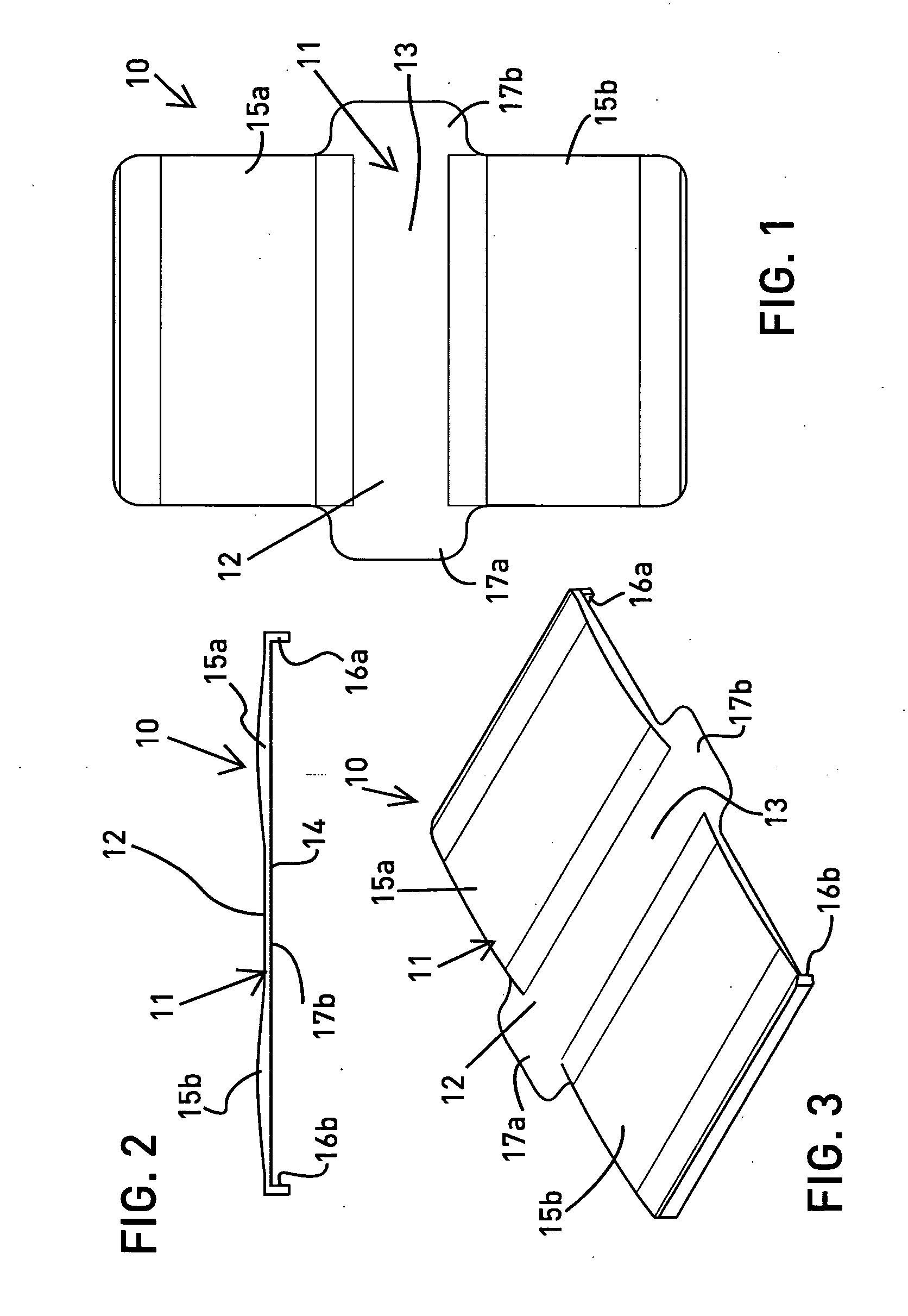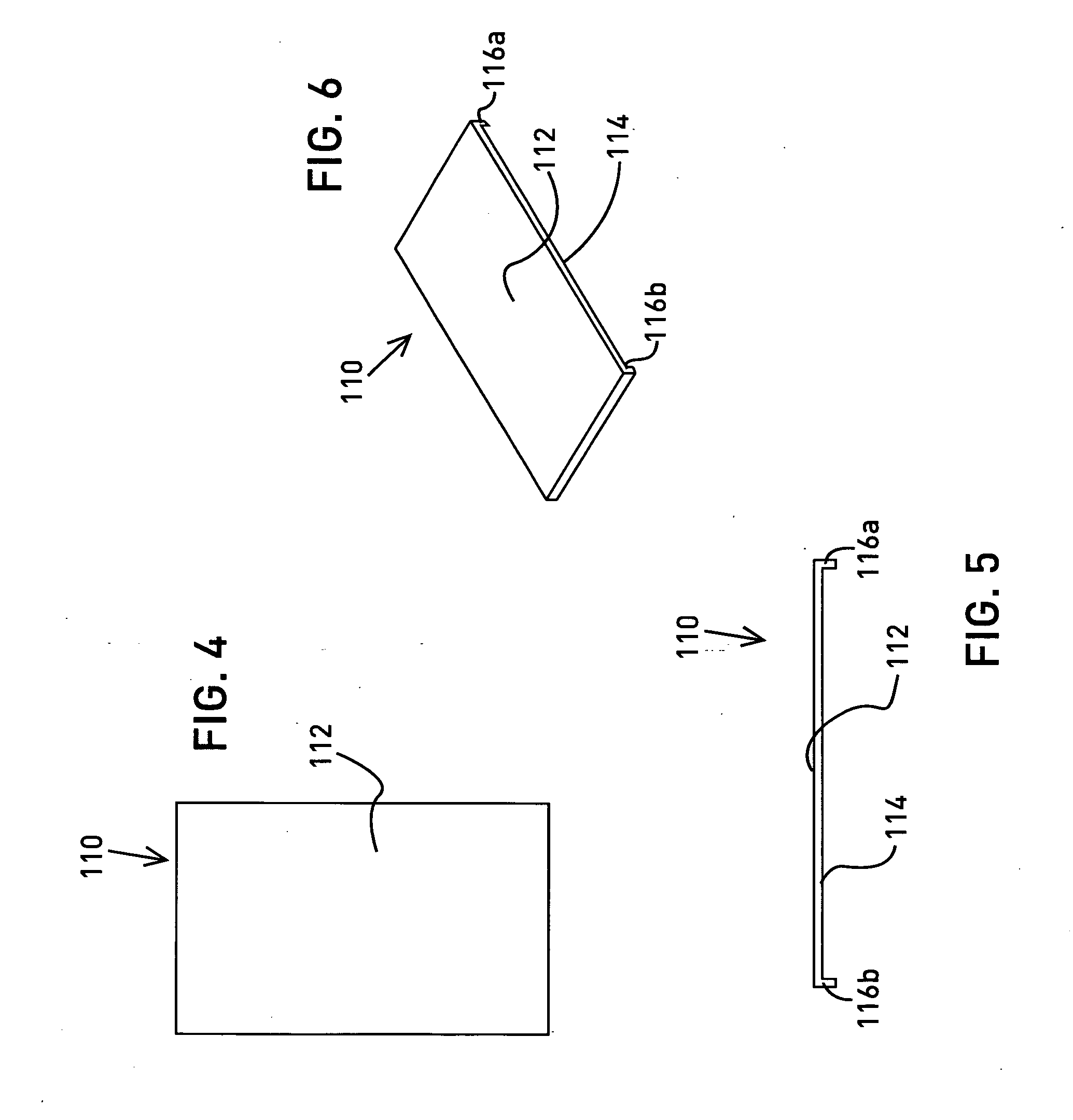Resilient pad for railroad vehicle
a technology for rail vehicles and pads, applied in the field of pads, can solve the problems of needing to replace wear plates, weaken frames at load-bearing locations, and damage to frame surfaces, so as to reduce the installation effort, prevent or minimize the aforesaid problems, and facilitate the handling of load forces and stresses
- Summary
- Abstract
- Description
- Claims
- Application Information
AI Technical Summary
Benefits of technology
Problems solved by technology
Method used
Image
Examples
Embodiment Construction
[0035]Referring to FIGS. 1-3, a preferred embodiment of a pad 10 for a wear plate is shown having a main body 11 with an upper surface 12 and lower surface 14. According to a preferred embodiment, the lower surface 14 is configured as a substantially planar surface. Preferably, the upper surface 12 is provided having force handling means comprising a force handling configuration. According to a preferred embodiment, the force handling means is illustrated comprising raised portions 15a, 15b of the surface 12. The raised portions 15a, 15b preferably are bulged and are disposed transversely on the pad 10 in a spaced apart relation to each other. As illustrated in FIGS. 1-3, the pad 10 has a spacing portion 13, with the raised portions 15a, 15b being provided on opposite sides of the spacing portion 13. The pad 10 preferably includes a feature for holding and aligning the pad 10 in an appropriate location for installation. Holding means for facilitating holding and aligning of the pad ...
PUM
 Login to View More
Login to View More Abstract
Description
Claims
Application Information
 Login to View More
Login to View More - R&D
- Intellectual Property
- Life Sciences
- Materials
- Tech Scout
- Unparalleled Data Quality
- Higher Quality Content
- 60% Fewer Hallucinations
Browse by: Latest US Patents, China's latest patents, Technical Efficacy Thesaurus, Application Domain, Technology Topic, Popular Technical Reports.
© 2025 PatSnap. All rights reserved.Legal|Privacy policy|Modern Slavery Act Transparency Statement|Sitemap|About US| Contact US: help@patsnap.com



